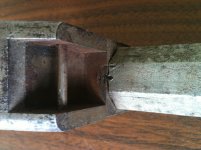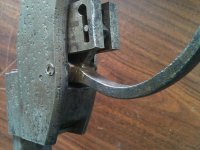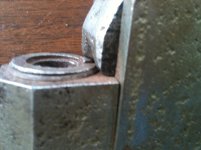This is fascinating. Your picture 22 is very telling. The breech block comes straight down and the hammer is cocked when the lever is lowered. This is classic Winchester (Browning) 1885 operation. It is quite unlike the Stevens. The receiver appears to be two pieces, which is odd. The barrel fits into one piece which is then somehow attached to the lower part of the receiver. This is a big clue if you are looking to find old, obscure rifles that might be related, but nothing comes to my mind.
I have two suggestions, one of which is exciting. How Browning worked when he developed a design is well known. He often hand-made a series of prototypes in his shop until he got one that he thought was the best he could do. Could this piece be such a prototype? Having no marks would be consistent with the idea. The receiver configuration is quite similar to the 78/85, but looking a little more like a lo-wall than a hi-wall. The trigger angle looks identical, which indicates to me that the internal action geometry is very similar. The lever looks close to what you see on real 78/85s. Being a .45-70 shows it was done after 1873. Browning began work on his single shot design a couple of years before his patent in 1878, If this were true. the gun is a priceless treasure, but I don't know if it could be verified.
The other possibility is that it is someone's attempt at a copy of the 1878/1885 Browning/Winchester, which is interesting, but not exciting. This is perhaps more likely.



